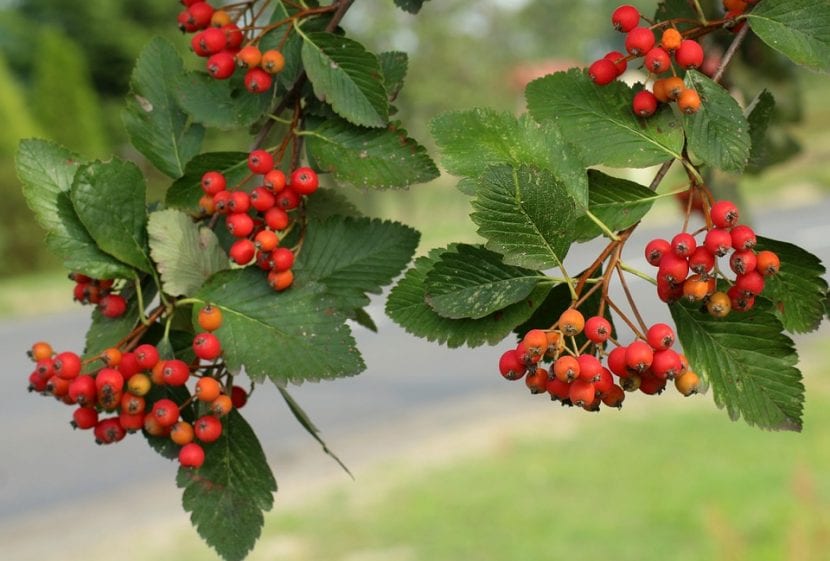
Sorbus intermediate
The plants known as rowan They are trees and shrubs with great ornamental value. Ideal for all types of gardens, be they small, medium or large, their flowers will brighten up the room (and the lives of their owners 😉) very easily.
In addition, their maintenance is not very complicated, since they resist frost well and can even be grown in pots as long as they are pruned regularly. Know them.
Origin and characteristics
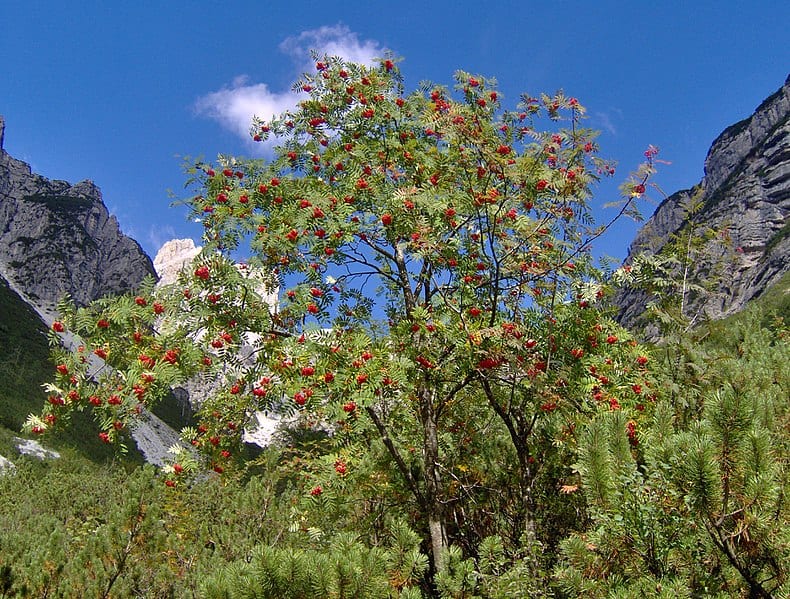
Our protagonists are trees and shrubs of the genus Sorbus, known as rowan trees. They are native to the temperate and cold regions of the northern hemisphere, found mainly in the mountains of western China and in the Himalayas. In Spain, we find them in the forests and mountains of the northern half, and also in some parts of Valencia and Mallorca.
They grow to a height of 7 to 20 meters. The leaves are deciduous, and are composed of 11 to 35 pinnate leaflets. The flowers, which sprout in spring, are white and are grouped in inflorescences with the shape of a dense panicle, each flower measuring 5 to 10mm. The fruit is a red berry with a maximum diameter of about 2cm.
Main species
The genus is made up of a total of 200 species, the main ones being the following:
- sorbus aria: known as mostajo, rowan, mostellar, common mustache or white mustache, it is a deciduous tree native to Europe, North Africa and Asia Minor. It reaches a height of 7 to 15 meters high. Resists up to -17ºC.
- sorbus aucuparia: known as rowan of hunters or azarollo, it is a deciduous tree native to Europe, Iceland, Russia and the Iberian Peninsula. It reaches a maximum height of 20 meters, and it resists frosts down to -17ºC.
- sorbus domestica: known as common rowan, sorbo or zurbal, it is a tree native to Europe, being one of the few found in Mallorca. As a curiosity, to say that one of the Mallorcan towns, Son Servera, takes the name of this species.
It reaches a height of 12 meters normally, being able to reach 20m. It resists up to -17ºC, but grows better in climates down to -7ºC. - Sorbus torminalis: known as wild sorbo, wild rowan or Peruvian mostajo, it is a deciduous tree native to almost all of Europe (except East), North Africa and West Asia. It grows to a height of up to 25 meters. Resists up to -17ºC.
- Sorbus latifolia: known as mostajo, it is a deciduous tree native to northwestern Africa, and southern, eastern and central Europe. It reaches a height of 10 meters. Resists up to -17ºC.
- Sorbus intermediateKnown as Swedish rowan, it is a deciduous tree native to southern Sweden, easternmost Denmark, extreme southwestern Finland, the Baltic states, and northern Poland. It reaches a height of 10 to 20 meters, and resists up to -17ºC.
What are their cares?
If you want to have a rowan specimen, we recommend providing it with the following care:
Location
They are plants that must be abroad, in full sun or with partial shade. They do not have very invasive roots, but to avoid problems they must be planted at a minimum distance of 5-6 meters from pipes, paved soils, etc.
Earth
- Flower pot: you can use universal growing medium mixed with 30% perlite, although if you live in a rather warm climate (with temperatures of up to 40ºC in summer and with very weak frosts in winter) it is advisable to mix mulch with some type of volcanic gravel, either pomx or akadama, in equal parts.
- Garden: grows in a wide variety of soils, preferring those with good drainage and they are fertile.
Irrigation
The frequency of irrigation will vary greatly throughout the year. Thus, while in summer you have to water very often, in autumn and especially in winter it will not be necessary to water them so frequently.
With this in mind, it will usually be necessary to water a few 4-5 times a week during the hottest season, and about 2 times a week the rest.
Subscriber
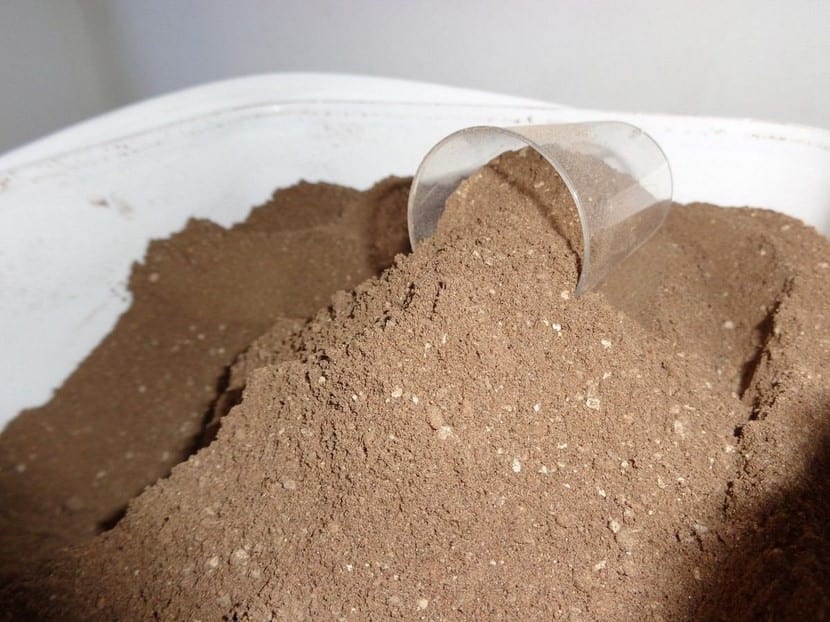
Guano powder.
In spring and summer must be paid with Organic fertilizers following the instructions specified on the package. It is important to use liquid fertilizers if they are grown in pots, since this way the substrate can continue to absorb the water easily when it is watered and it rains.
Pruning
Early / mid autumn Dry, diseased, weak or broken branches must be removed. It is also a good time to trim those that are growing excessively.
Multiplication
Rowan multiply by seeds and shoots. Let us know how to proceed in each case:
Seeds
Sowing is divided into two phases: cold stratification and seedling:
Phase 1 - Stratification (in winter)
- First, a tupperware is filled with vermiculite previously moistened -with water-.
- Then, the seeds are sown and copper or sulfur is sprinkled on top to prevent the appearance of fungi.
- Afterwards, they are covered with a layer of vermiculite.
- Finally, the tupperware is closed with its lid and placed inside the refrigerator, in the section for sausages, milk, etc.
Once a week it must be opened to renew the air. After three months, they will go to seedlings.
Phase 2- Seedbed
- First, a seedling tray or pot is filled with universal growing medium mixed with 30% perlite.
- Second, it is watered consciously.
- Third, the seeds are sown - without the vermiculite - and sprinkled with copper or sulfur.
- Fourth, they are covered with a thin layer of substrate.
- Fifth, it is watered overhead, and placed outside, in semi-shade.
Thus, they will germinate throughout the spring.
Suckers
Sometimes rowan shoots grow around it. When these are about 10cm high, you can separate them with the help of a hoe and a hand saw or handsaw previously disinfected with pharmacy alcohol. Then it will only be a matter of planting them in individual pots with mulch mixed with 30% perlite, akadama or similar, or in other areas of the garden / orchard.
Plagues and diseases
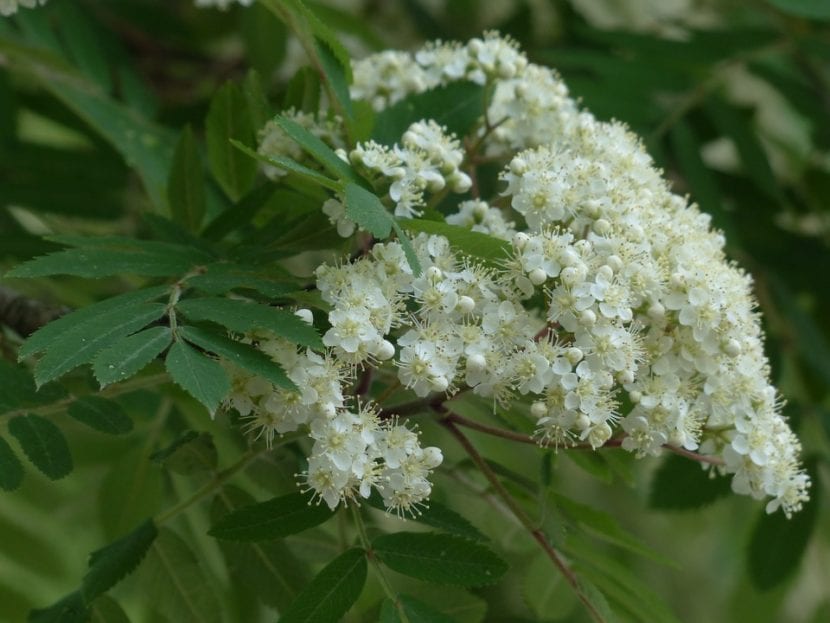
They are very resistant in general, but can be affected by borers and by the fungus of the roya. In the first case, we will treat with a specific insecticide, and in the second, with fungicides.
Rusticity
They resist frosts of up to -17ºC the vast majority from Sorbus.
What uses do they have?
Ornamental
They are very decorative plants, ideal as isolated specimens or even as hedges. In addition, they provide pleasant shade, which is great if you live in an area where summer is especially hot.
Culinary
The fruits are used to make jams, as well as alcoholic beverages (vodka). Calming drinks are prepared with the flowers.
Medicinal
The fruits are used to treat various diseases, such as bronchitis, anemia, gout, menstrual pain, scurvy or diarrhea. In addition, they are diuretics and astringent, so it is certainly a good idea to include them in your diet 😉.
Wood
Being hard and elastic, it is used in turnery.
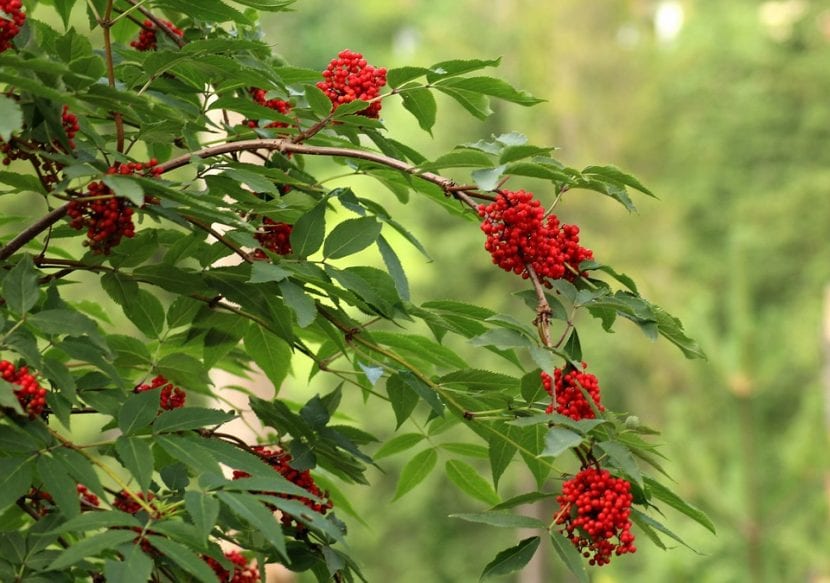
sorbus aucuparia
What did you think of the rowan?
Well, I want one !!! If possible, already grown and close to bearing fruit!
I love your page !! For the good explanations and advice you give us.
What a beauty of trees ... so I discovered that I am a rowan, it is beautiful and those flowers in white are a beauty, well I like the maple for the color of its leaves and the jacaranda, the cypress is seen as a conito al Guardian side at the entrances of a farm, I also like cedar for the usefulness of the wood.
The truth is that trees they are wonderful, yes 🙂
Hello Lola,
Thank you for your words. We love that you like the blog 🙂
You can look at ebay. Sometimes they sell interesting plants.
Regards!